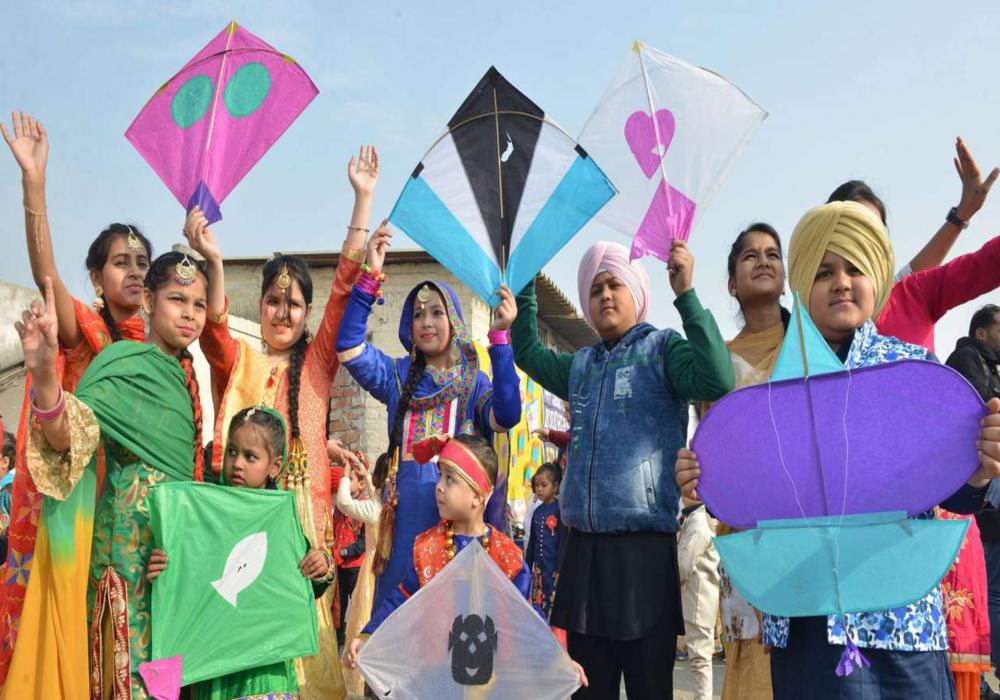
Last Updated At: 02-Dec-2022
Every Indian must be aware of these fascinating Makar Sankranti Facts
India's rich history is more excessive than some other country in this world. There are incalculable celebrations celebrated in the nation and a large portion of us apparently have never heard about numerous celebrations.
There are various less-popular celebrations, one such celebration that pretty much every Indian knows is Makar Sankranti. While every celebration celebrated in India has its own uniqueness regarding ceremonies, demographics and so forth., Makar Sankranti nails its uniqueness with something out of the box. Here is a depiction of the 15 fascinating Makar Sankranti facts and find what's so special about this celebration.
Intriguing Makar Sankranti Facts:
1. Makar Sankranti one such celebration in India that follows the solar calendar. This is the drive behind why it falls on precisely the same date for a long time according to Georgian schedule. For the records, it is highly praised on fourteenth of January every year.
2. It is being said that 2015 onwards, this celebration will be praised on fifteenth of January every year. Well! that is right because this year, Makar Sankranti festivities occurred on January 15, 2015.
3. As the time passed away, the date of Makar Sankranti has changed. A 1000 years prior, this celebration was commended on 31st of December.
4. This modification in date happens in view of direction change in a rotational hub of Earth.
5. According to Hindu Solar Calendar, the celebration is commended on first Magh (for the individuals who don't know about Magh, it is the name of a month according to Hindu calendar).
Makar Sankranti is a Festival of Harvest and is celebrated on the day after the winter solstice. There is no different festival for the day of the winter solstice in Hindu religion that is a reason the Hindus consolidate or conflate the winter solstice with the celebration, trusting that the sun end Dakshinayana (southward adventure) at the Tropic of Cancer and begins Uttarayaana (northward voyage) towards the Tropic of Cancer.
6. Like 70 years, the date for winter solstice one day prior. This happens because of the modification in direction of the rotational axis of Earth. Passing by this calculation, if Makar Sankranti really denoted the day after winter solstice, it would have returned in 300 BCE.
7. Makar Sankranti is actually much-admired in Nepal. According to Bikram Samwat (Nepali logbook), it is commended on 1st Magh and marks the end of Poush – the unlucky month. Every single religious activity in Nepal are wholly prohibited in the month of Poush and the celebration denotes sun's northward movement from its southernmost position.
8. Makar Sankranti in India is actually related with kite-flying. This norm has for some time been followed not because it has a clear religious implication, however; it enables individuals to relax in the early morning sun when sunbeams are moderate.
9. Makar Sankranti is related with pilgrimage. In Uttar Pradesh, Kumbh Mela begins with Makar Sankranti. In West Bengal; it is Gangasagar or Sagardweep Mela. Visitors take a dip in sacred river water to wash off all their wrongdoings.
10. Makar Sankranti means the change of sun from the zodiac Sagittarius to Capricorn. Makar is the Sanskrit word for Capricorn while Sankranti is the Sanskrit word for change.
So what are you waiting for? Let’s celebrate Makar Sankranti with joy as the festival is already knocking at our doors.
--- Published By Gagan Sharma
Latest Blogs

17 Best Places for 2 Days Trip from Delhi

Top 10 Hill Stations Near Bangalore for an Unforgettable Get...

Top 10 Hill Stations Near Chennai For a Perfect Getaway

10 Best Hill Station Getaways Near Gurgaon for Peace Seekers

10 Astonishing Underwater Temples of India You Must Visit in...
Speak to our experts
Popular Flights
Coimbatore to Bangalore Flights
Indore to Varanasi Flights
Srinagar to Pune Flights
Delhi to Udaipur Flights
Dehra Dun to Bhubaneswar Flights
Srinagar to Vishakhapatnam Flights
Coimbatore to Jammu Flights
Nagpur to Guwahati Flights
Srinagar to Amritsar Flights
Kochi to Pune Flights

 Dubai
Dubai Malaysia
Malaysia USA
USA






